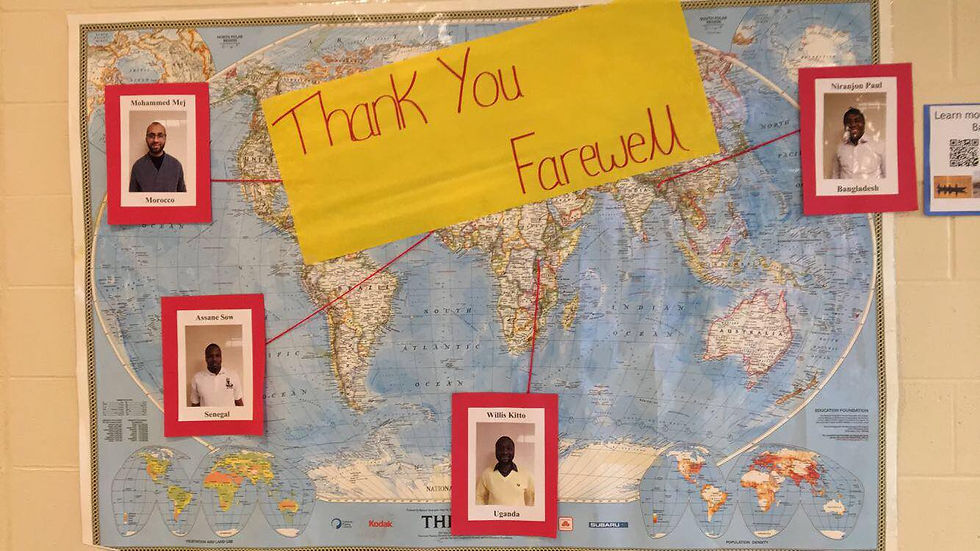Our International Scholars
- Eve Murray
- Apr 13, 2018
- 3 min read

The ILEP Program picks 64 teachers a year from 16 countries, through written and oral application. Teachers are selected on basis of teaching and leadership skills. In the end, 4 teachers from 4 different countries and academic areas are grouped together to work with a high school and university. In our school and Kent State University, we are able to exchange culture and knowledge with Willis Kitto from Uganda, Niranjon Paul from Bangladesh, Mohammed Mej from Morocco, and Assane Sow from Senegal.
When asked about the ILEP program they said most active teachers try to apply, everyone is striving for this opportunity to learn how we teach and experience the culture. It is also only a 5 month program, where the international scholars are not just learning from the American education system but also the other 3 teachers in their group. All 4 of them agree, it is better than they imagined.
“In life, we should discover, strive to grow and share.”
They really learned what the real american woman, man and child is like. “When we live with them and learn with them you can be surprised what you find.” Our openness was surprising, ‘we like having our space’ but they saw kind welcoming people ready to help, ready to talk and listen. Like most stereotypes, they are not real for everyone.
To get some perspective, here is how they describe their schools.
Willis Kitto from Uganda says, “There are over 4,000 students in 6 core classes(which are broken down into streams of difficulty), which leads to about 100 students per classroom in comparison to our 30 students per classroom. Teachers rotate classrooms instead of students, since there are so many. Children will spend 6 years in secondary school, where they must pass exams to move on, creating a competition to succeed not based on age. There are even uniforms based on class, so many kids want to pass the exam to get a new uniform. They also need to pay fees to move on even if they pass the exam.”
Kitto described the community’s support of children going to school. There are 30 independent schools educating 10,000 students in the same area, which means a lot of uniforms and competition. But the community really wants the kids in their school, whenever they see a wandering kid they call the school security and they make sure they get to the right facility. Kitto also talked about the reality of having to work and go to school, for him, he worked from age 15 till now for his own benefit. Without working to support his family he wouldn’t be the teacher he is today.
Mohammed Mej from Morocco also works with children who work on farms before and after school, which truly creates a different mindset towards education compared to here in Aurora. He sees his students suffering and struggling, wishing they could enjoy their youth. While here, Mej said, “I feel like when I sit down with students here, they are adults.” However he also said the public schools are not much different from Uganda and Bangladesh.
Niranjon Paul from Bangladesh described having hour long classes, and 11th and 12th grade being more like a college class size. Like some teachers here, he uses edmodo with his students and weekly quizzes for understanding. One thing that stood out to me about his school is their uniform policy, students MUST be in uniform to enter the building, for example if you aren’t wearing the uniform black shoes… don’t bother trying to go to school. “Many students go on to learn to tutor at University because so many students need tutors, if not several to get to college level.”
Overall, all of the teachers are very pleased with the program. Niranjon Paul said he wanted to bring a more independent atmosphere to his classroom after seeing our freedom, Willis wants to bring technology back to help extend his teaching abilities, and Majd really wants to share the culture of America, the ‘melting pot’ with his students.
They say it is better than they could have anticipated, “We expected Americans to be individualistic and to themselves, we found only welcoming kind people ready to share their experience.”











































Comments